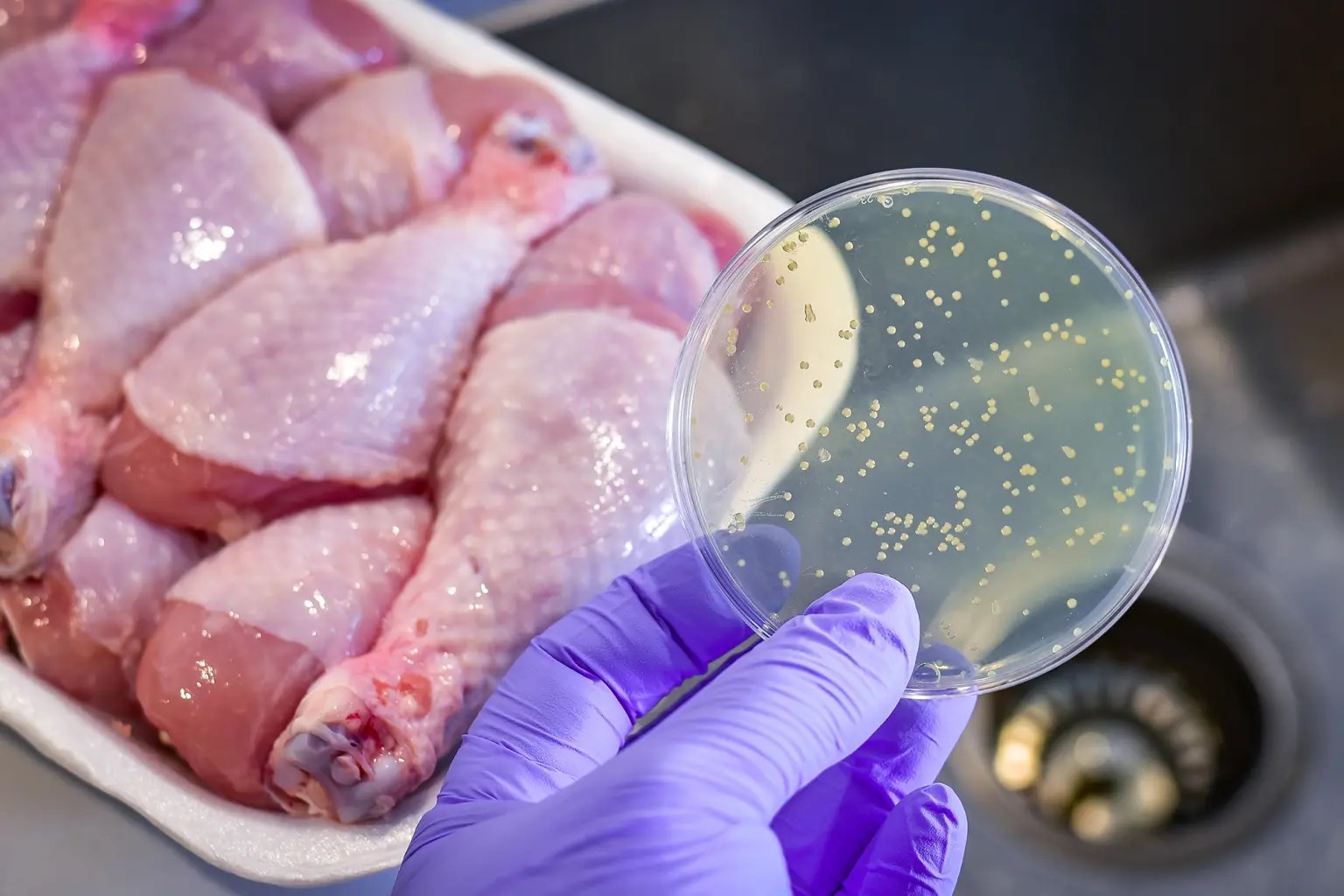
Archive: National Advisory Committee on Microbiological Criteria for Foods (NACMCF)
About NACMCF
The National Advisory Committee on Microbiological Criteria for Foods (NACMCF) was a discretionary advisory committee established in 1988 by the Secretary of Agriculture, after consulting with the Secretary of Department of Health and Human Services (HHS). The Committee was formed in response to the recommendations of the National Academy of Sciences and the U.S. House of Representatives Committee on Appropriations to provide an interagency approach to microbiological criteria, given that numerous federal, State, and local agencies are responsible for food safety. NACMCF provided impartial scientific advice and recommendations to the U.S. Department of Agriculture (USDA) and other government agencies on microbiological and public health issues relative to the safety of the U.S. food supply.
NACMCF reports provide current information and can serve as part of the foundation for regulations and programs aimed at reducing foodborne disease and enhancing public health. For example, NACMCF was instrumental in formulating and standardizing the principles of hazard analysis and critical control point (HACCP) systems.
Below is a list of select reports completed by NACMCF. Contact the NACMCF Executive Secretariat at NACMCF@usda.gov if you are looking for a NACMCF report or another document that is not included in this list:
-
2023. Response to Questions Posed by the Food Safety and Inspection Service: Enhancing Salmonella Control in Poultry Products. (JFP – 2024) https://doi.org/10.1016/j.jfp.2023.100168
-
2021. The Use of Water in Animal Production, Slaughter, and Processing. (JFP – 2022) https://doi.org/10.4315/JFP-22-144
-
2021. Microbiological Testing by Industry of Ready-to-Eat Foods under FDA's Jurisdiction for Pathogens (or Appropriate Indicator Organisms): Verification of Preventive Controls. (JFP – 2022) https://doi.org/10.4315/JFP-22-143
-
2018. Response to Questions Posed by the Food and Drug Administration Regarding Virulence Factors and Attributes that Define Foodborne Shiga Toxin-Producing Escherichia coli (STEC) as Severe Human Pathogens. (JFP – 2019) https://doi.org/10.4315/0362-028X.JFP-18-479
-
2018. Response to Questions Posed by the Food Safety and Inspection Service Regarding Salmonella Control Strategies in Poultry. (JFP – 2019) https://doi.org/10.4315/0362-028X.JFP-18-500
-
2017. Response to Questions Posed by the Department of Defense Regarding Microbiological Criteria as Indicators of Process Control or Insanitary Conditions. (JFP – 2018) https://www.sciencedirect.com/science/article/pii/S0362028X22083909?via%3Dihub
-
2014. Response to the Questions Posed by the Food Safety and Inspection Service, the Centers for Disease Control and Prevention, the National Marine Fisheries Service, and the Defense Health Agency, Veterinary Services Activity Regarding Control Strategies for Reducing Foodborne Norovirus Infections. (JFP – 2016) https://doi.org/10.4315/0362-028X.JFP-15-215
-
2007. Assessment of Food as a Source of Exposure to Mycobacterium avium subspecies paratuberculosis (MAP). (JFP – 2010) https://www.sciencedirect.com/science/article/pii/S0362028X23059859?via%3Dihub
-
2009. Parameters for Determining Inoculated Pack/Challenge Study Protocols. (JFP – 2010)
https://www.sciencedirect.com/science/article/pii/S0362028X22115759 -
2009. Response to Questions Posed by the Food Safety and Inspection Service Regarding Determination of the most Appropriate Technologies for the Food Safety and Inspection Service to Adopt in Performing Routine and Baseline Microbiological Analyses. (JFP – 2010)
https://www.sciencedirect.com/science/article/pii/S0362028X22128437 -
2007. Response to the Questions Posed by the Food and Drug Administration and the National Marine Fisheries Service Regarding Determination of Cooking Parameters for Safe Seafood for Consumers. (JFP – 2008)
https://doi.org/10.4315/0362-028X-71.6.1287 -
2005. Analytical Utility of Campylobacter Methodologies. (JFP – 2007)
https://doi.org/10.4315/0362-028X-70.1.241 -
2004. Requisite Scientific Parameters for Establishing the Equivalence of Alternative Methods of Pasteurization. (JFP – 2006)
https://doi.org/10.4315/0362-028X-69.5.1190 -
2004. Considerations for Establishing Safety-Based Consume-By Date Labels for Refrigerated Ready-to-Eat Foods. (JFP – 2005)
https://doi.org/10.4315/0362-028X-68.8.1761 -
2002. Hot Holding Temperatures. The National Advisory Committee on Microbiological Criteria for Foods (NACMCF) Report.
https://www.fsis.usda.gov/NACMCF_Temperatures_Report_2002_Final.pdf -
1999. Microbiological Safety Evaluations and Recommendations on Sprouted Seeds. (JFP – 1999) https://doi.org/10.1016/S0168-1605(99)00135-X
-
1999. Microbiological Safety Evaluations and Recommendations on Fresh Produce. (JFP – 1999)
https://doi.org/10.1016/S0956-7135(99)00026-2 -
1997. Hazard Analysis and Critical Control Point Principles and Application Guidelines. (JFP – 1998) https://www.sciencedirect.com/science/article/pii/S0362028X22017008
-
1996. Microbial Hazards and Emerging Issues Associated with Produce. A Preliminary Report to the National Advisory Committee on Microbiologic Criteria for Foods. (JFP – 1997)
https://doi.org/10.4315/0362-028X-60.11.1400 -
1996. National Advisory Committee on Microbiological Criteria for Foods. Principles of Risk Assessment for Illnesses Caused by Foodborne Biological Agents. (JFP – 1997)
https://doi.org/10.4315/0362-028X-60.11.1417 -
1996. Generic HACCP Application in Broiler Slaughter and Processing. (JFP – 1997) https://doi.org/10.4315/0362-028X-60.5.579
-
1990. Refrigerated Foods Containing Cooked, Uncured Meat or Poultry Products that are Packaged for Extended Refrigerated Shelf Life and that are Ready-To-Eat or Prepared with Little or No Additional Heat Treatment.
https://www.fsis.usda.gov/NACMCF_Refrigerated-Foods_Report_1991 Final.pdf





